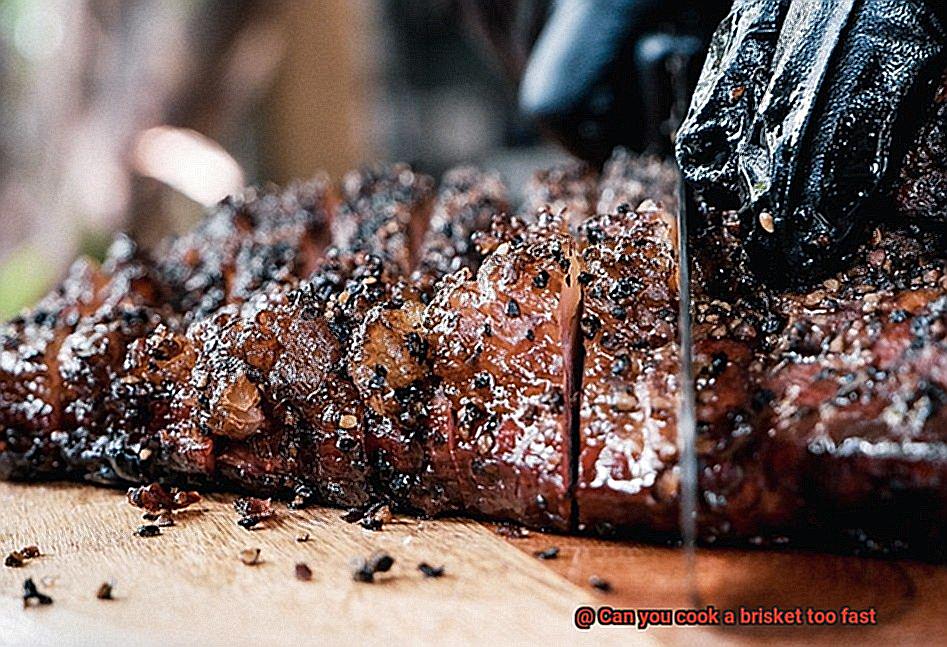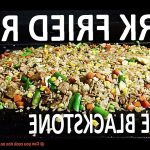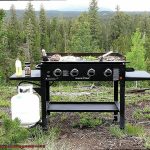Calling all meat enthusiasts. Do you crave a succulent, tender, and flawlessly cooked brisket? If so, then you’re aware that cooking brisket is no easy task. It requires careful consideration of multiple factors, such as selecting the perfect seasoning, cooking at the optimal temperature, and ensuring sufficient cooking time.
But what about cooking a brisket too fast? Is it possible to rush the process and still end up with a delicious result? As an expert on all things brisket, I can confidently say that the answer is both yes and no.
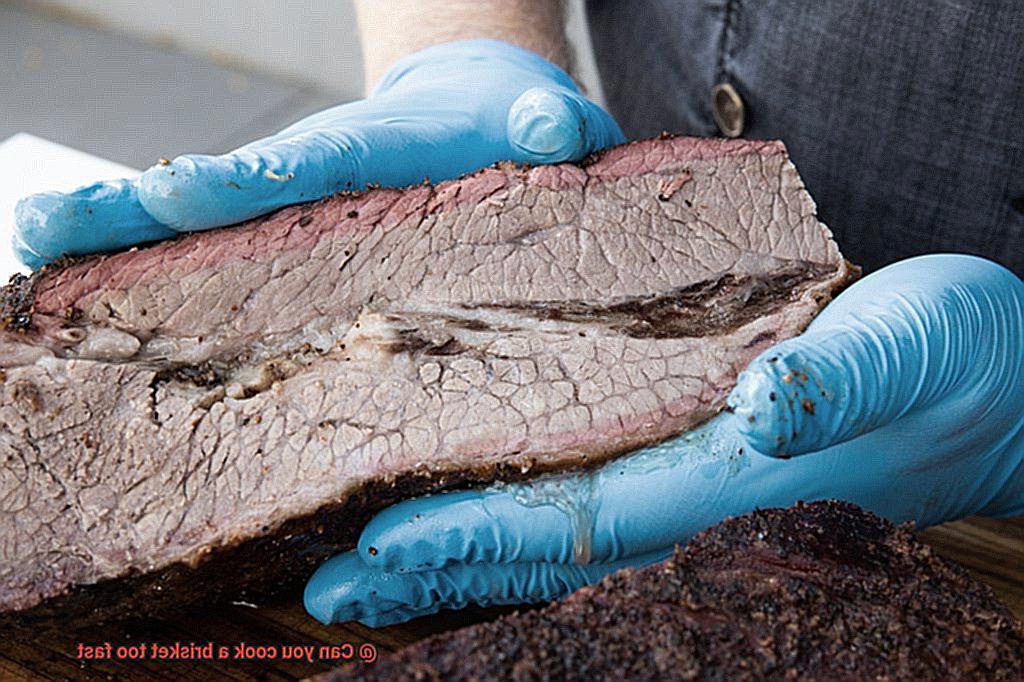
On one hand, cooking a brisket too quickly can result in tough, chewy, and dry meat. On the other hand, there are certain techniques and methods that can expedite the process without compromising flavor or texture.
In this blog post, we’ll delve into the question of whether you can cook a brisket too fast. We’ll examine various factors that impact cooking time for briskets, explore risks associated with rapid-cooking methods for this cut of meat and share best practices for preparing mouth-watering briskets in record time. So grab a seat and get ready to take notes because by the end of this post, you’ll be well-equipped to masterfully prepare your own delicious brisket.
Contents
What is a Brisket?
If you’ve never tasted this mouthwatering cut of beef before, you’re in for a treat. So, let’s get right into answering the question on everyone’s mind: What is a brisket?
Well, a brisket is a cut of beef that comes from the lower chest area of the cow. It’s tough, full of flavor, and requires a slow and low cooking method to break down the connective tissues and make it tender. The brisket is composed of two muscles – the flat and the point. While the flat is leaner, the point has more marbling and fat. Both parts are commonly used for smoking, grilling, or braising.
If you’re looking to experience the ultimate BBQ flavor, then you need to try Texas-style brisket. Here, it’s seasoned with a dry rub and smoked for up to 18 hours over oak or mesquite wood. The result is a tender and juicy meat with a smoky flavor that melts in your mouth.
When buying a brisket, make sure to choose one with a thick layer of fat on one side, known as the cap. This fat layer helps keep the meat moist during cooking and adds flavor.
Now that you know what a brisket is let’s talk about why it requires slow cooking. Brisket is a tough cut of meat that needs time to break down its connective tissues and become tender. Cooking at a temperature between 225°F and 250°F for several hours allows the meat to slowly break down and become tender and flavorful.
Think of it like running a marathon – you can’t sprint your way through it without getting tired and potentially injuring yourself. Similarly, cooking a brisket too quickly can result in dry and tough meat that is unpleasant to eat. So take your time, enjoy the process, and let that delicious smoky flavor develop over time.
It’s important to note that every brisket is different, and there are several factors that can impact cooking time. The size of the brisket, thickness of the meat, and even the type of smoker or grill being used can all play a role. To ensure your brisket is cooked properly, use a meat thermometer to monitor the internal temperature. The ideal temperature range for a cooked brisket is between 195°F and 205°F.
Ideal Cooking Temperature for a Brisket
Sure, it may be tempting to speed up the cooking process by cranking up the heat, but trust me, slow and steady wins the race when it comes to brisket. Think of it like a marathon – rushing through it will only result in dry and tough meat. But taking your time and letting that delicious smoky flavor develop over time will reward you with the ultimate BBQ experience.
So, what’s the magic number for the ideal cooking temperature for a brisket? It’s between 225-250 degrees Fahrenheit. This low and slow cooking method allows the meat to cook evenly, breaking down the tough connective tissue and resulting in a tender and juicy brisket that will melt in your mouth.
Now, I know some of you may be thinking, “But can’t I just cook it faster at a higher temperature?” Sorry, my friend, but cooking at a higher temperature can cause the outside of the meat to cook faster than the inside, resulting in an overcooked exterior and undercooked interior – a real BBQ faux pas.
And if you try to rush it, the fat within the meat won’t fully render, resulting in a greasy and unpleasant texture. We want that fat to melt away and infuse our brisket with flavor.
So, remember to stick to that ideal temperature range and give your brisket enough time to cook slowly. Your patience will be rewarded with a delicious and perfectly cooked meal that will impress even the toughest BBQ critics.
Factors that Impact Cooking Time
Cooking a brisket is more than just throwing it on the grill or in the oven. It’s an art form that requires patience, skill, and attention to detail. To achieve the perfect brisket, you need to understand the critical factors that impact cooking time.
One of the most crucial elements that determine how long you should cook your brisket is its size. Generally, larger briskets take longer to cook than smaller ones. A good guideline is to allow about an hour of cooking time per pound of meat. However, other factors may also impact the cooking time.
The cooking method you choose is another significant factor that affects cooking time. Smoking and slow roasting are two popular methods used for briskets. Smoking involves cooking the meat over low heat and smoke for several hours, which can take up to 12 hours or more. In contrast, slow roasting involves cooking the meat in an oven at low heat for several hours until it reaches the desired temperature. The time required for slow roasting typically takes around 6-8 hours, depending on the size of the brisket.
The temperature at which you cook your brisket also plays a significant role in determining its cooking time. While high temperatures may result in a faster cooking time, it can also cause the meat to become tough and dry. Therefore, it’s essential to maintain a consistent low temperature throughout the cooking process.
Finally, your preferred level of tenderness will also affect its cooking time. If you want your brisket to be tender and juicy, it will require more time to cook than if you prefer it slightly tougher.
In summary, when preparing a brisket, several factors impact cooking time. It’s crucial to understand these factors and take them into account to ensure that you end up with a perfectly cooked and delicious brisket every time. Whether you’re smoking or slow-roasting your next brisket creation, remember that patience is key.
Can You Cook a Brisket Too Fast?
The answer is a resounding yes.
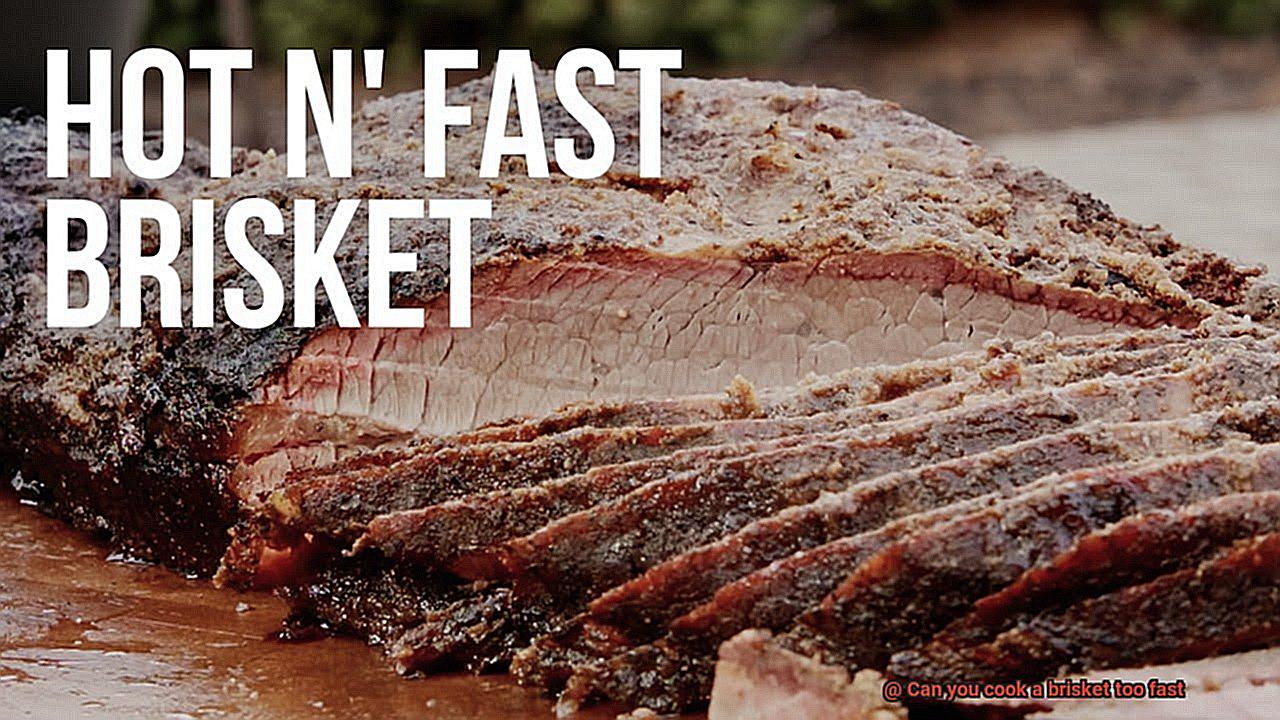
Cooking a brisket is like crafting a masterpiece; it requires patience, dedication, and attention to detail. If you try to rush through the process, it will result in undesirable outcomes. Cooking a brisket too fast can result in tough, dry meat that lacks flavor.
The key to perfect brisket cooking is to maintain a consistent temperature range between 225-250°F and cook it low and slow for several hours. If you try to cook it at high temperatures or for less time than recommended, you run the risk of ruining your meat.
One of the primary reasons why cooking brisket too fast is problematic is the connective tissue present in the meat. This tissue needs to break down slowly at a low temperature for an extended period to achieve that tender, juicy texture that we all love about perfectly cooked brisket. When cooked too quickly, this connective tissue doesn’t have enough time to break down, resulting in tough, chewy meat.
Another issue with cooking brisket too fast is that the outside of the meat can become burnt or charred while the inside remains undercooked. This can lead to an unpleasant taste and texture, making the brisket difficult to eat.
In conclusion, cooking a brisket too fast is not advisable as it can lead to dry, tough meat that lacks flavor. To ensure your brisket turns out perfect, you need to cook it low and slow at a consistent temperature, giving enough time for the connective tissue to break down and flavors to develop.
Dangers of Cooking a Brisket Too Fast
It’s tempting to rush through the process, but trust us – the risks just aren’t worth it.
Think of cooking a brisket too fast like trying to force a square peg into a round hole. It’s just not going to work. Brisket is a tough cut of meat that requires patience and respect to achieve that melt-in-your-mouth texture and heavenly flavor.
One major danger of cooking a brisket too fast is the risk of it becoming tough and dry. Imagine biting into a chewy piece of leather instead of that juicy, flavorful meat you were dreaming about – not exactly appetizing, right? This happens when the connective tissue and fat don’t have enough time to break down properly.
But wait, there’s more. Cooking a brisket too fast also increases the risk of harmful bacteria developing. Yikes. To avoid this potential health hazard, it’s crucial to ensure that the internal temperature of the meat reaches a level that’s hot enough to kill off any bacteria that may be present.
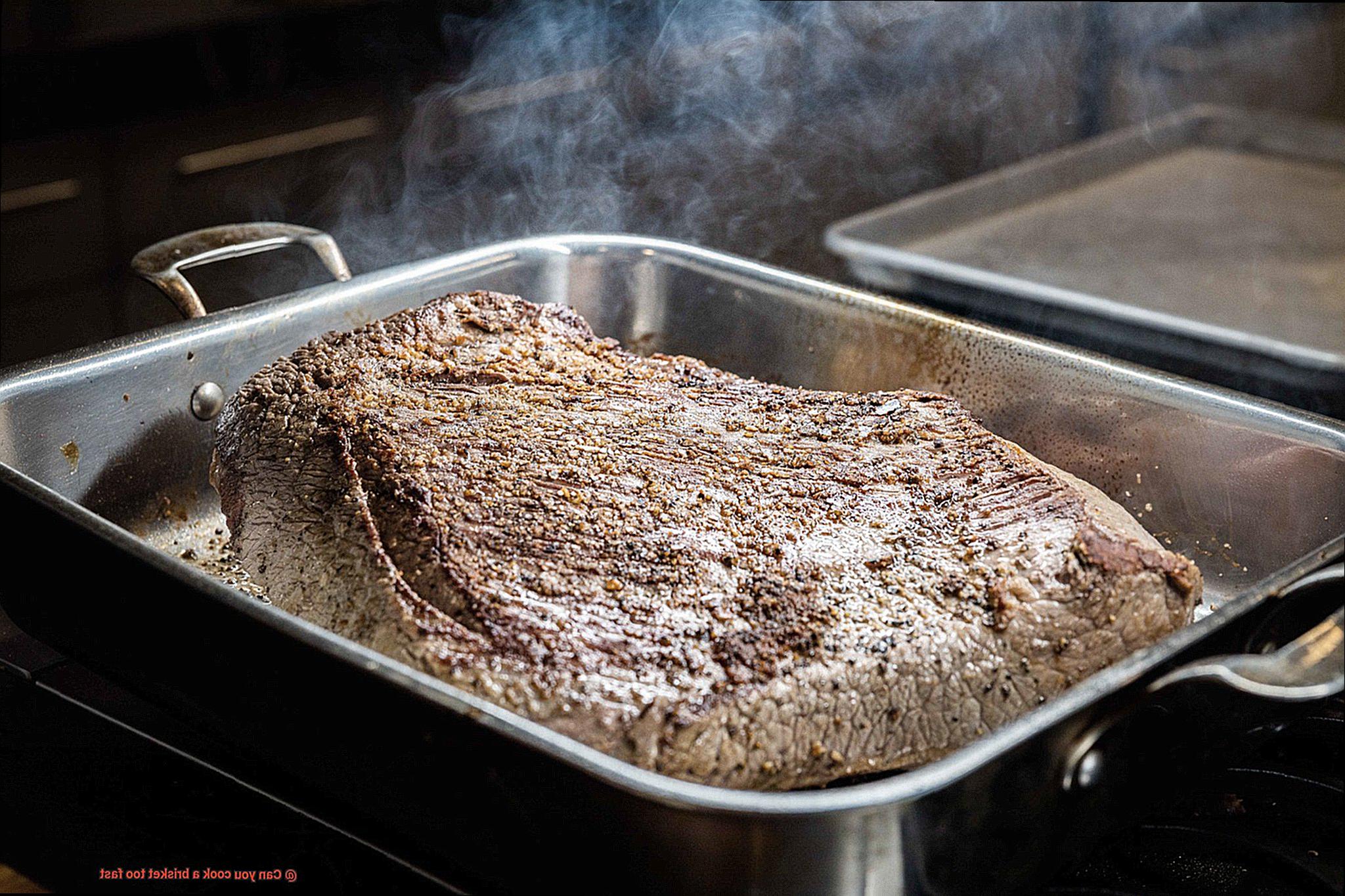
So, how can you avoid these dangers and achieve that perfect brisket? The answer is simple – take your time. Cooking a brisket is an art form that requires dedication, attention to detail, and most importantly – patience. Keep the temperature low and consistent, between 225-250°F, and allow that meat to cook low and slow until it’s falling apart tender.
In conclusion, cooking a brisket too fast is like trying to skip ahead to the climax of your favorite movie – you miss out on all the good stuff. Don’t let impatience ruin your masterpiece. Take your time and let that brisket cook low and slow until it’s nothing short of mouth-watering perfection.
How to Cook a Brisket Properly
Cooking a brisket is not for the faint of heart, but with the right techniques, you can create a mouth-watering masterpiece. Here are five essential steps to cooking a brisket properly.
Step 1: Choose the Right Cut of Meat
The first step in cooking a brisket is selecting the right cut of meat. Look for a brisket that is well-marbled with fat and has a thick layer of fat on one side. This will help keep the meat moist during cooking. Remember, brisket comes from the chest of the cow and contains a lot of connective tissue, which requires slow cooking to break down and become tender.
Step 2: Prepare the Meat
Preparing the brisket correctly is crucial to achieving a juicy and flavorful final product. Trim any excess fat from the brisket, leaving about ¼ inch of fat on one side. This will help keep the meat moist during cooking. Rub the brisket with your favorite seasoning blend and let it sit at room temperature for about an hour before cooking. This allows the meat to absorb the flavors of the seasoning.
Step 3: Cook Low and Slow
The key to cooking a brisket properly is low and slow cooking. You’ll need a smoker or grill that can maintain a low temperature between 225°F and 250°F for several hours. The cooking time can range anywhere from 8-16 hours, depending on the size of the brisket. A general rule of thumb is to allow about 1 hour per pound of meat.
However, this can vary depending on your cooking method and temperature. It is important to monitor the internal temperature of the brisket using a meat thermometer. The ideal temperature for a fully cooked brisket is between 195°F and 205°F.
Step 4: Use the Right Equipment
Investing in the right equipment is essential to achieving a perfectly cooked brisket. A smoker or a grill with a smoker box is ideal for cooking brisket. The smoker provides the low and slow heat required for cooking brisket and infuses it with smoky flavor. It’s also important to use quality wood chips or chunks to add flavor to the meat.
Step 5: Rest Before Serving
Resting the brisket after cooking is crucial to ensuring a juicy and flavorful final product. Once the brisket is cooked, remove it from the grill and let it rest for at least an hour before slicing. This allows the juices to redistribute throughout the meat, resulting in a tender and flavorful brisket. Resist the temptation to slice into it immediately after cooking – patience is key.
M5FyLL4O0dE” >
Conclusion
To sum it up, cooking a brisket is an art that requires patience, dedication, and attention to detail. Although it may be tempting to rush the process and cook a brisket too quickly, doing so can result in tough, dry meat that lacks flavor. The key to achieving a perfect brisket is maintaining a consistent temperature range between 225-250°F and cooking low and slow for several hours.
Several factors such as the size of the brisket, cooking method, temperature, and desired level of tenderness can all impact cooking time. It’s crucial to understand these factors and take them into account to ensure a perfectly cooked and delicious brisket every time.
To achieve mouth-watering perfection, start by choosing the right cut of meat and preparing it correctly with your favorite seasoning blend. Next, use quality equipment such as a smoker or grill with a smoker box while monitoring the internal temperature with a meat thermometer. Finally, allow the brisket to rest before serving to seal in those delicious juices.
Remember that cooking a brisket too fast is not advisable as it can lead to dry, tough meat that lacks flavor. Take your time and let that delicious smoky flavor develop over time.

